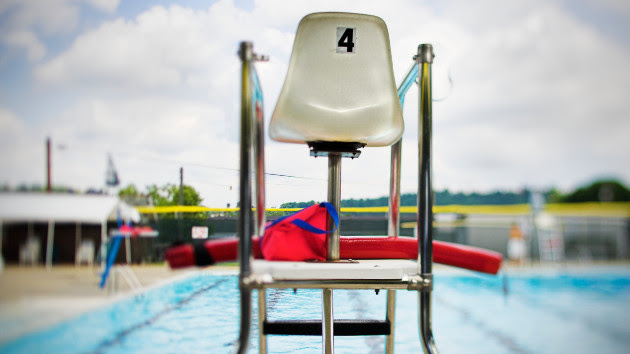(NEW YORK) — The month of July has seen the highest number of unintentional drowning deaths since 2018, according to data from the Centers for Disease Control and Prevention.
Provisional data shows that nearly 800 people died in 2022 from an accidental drowning. According to the CDC, in 2020, during the peak of the coronavirus pandemic, it topped 839 accidental drownings. The U.S. sees over 4,000 deaths from drownings each year.
Drowning is also the leading cause of death for children between the ages of 1 and 4 and the second leading cause of death for kids between 5 and 14, according to the CDC.
The American Academy of Pediatrics released a statement in late June encouraging both parents and doctors to prioritize water safety, especially during the summer months when more families head to swimming pools, beaches and lakes.
“We have to look at swimming as a basic life skill, like learning to read. Because it is,” pediatrician Dr. Andrew Kiragu said in the statement. “Swimming is a skill that can save your life or the life of your child. It’s something everyone needs to learn.”
The National Drowning Prevention Alliance, a nonprofit founded in 2005, is dedicated to lowering the number of drownings and promoting water safety. Adam Katchmarchi, the group’s executive director, previously shared with ABC News’ Good Morning America the organization’s recommendations for staying safe near water.
“Oftentimes, parents think that they will see something or hear something when their child is drowning, and unfortunately, it’s very silent and very quick,” Katchmarchi said. “We recommend parents practice five simple layers of protection they can do to keep their child safe around the water.”
The National Drowning Prevention Alliance recommends these top five water safety tips:
Install and use alarms and fences
Barriers like proper fencing and alarms can “help restrict access to water and provide notification when someone enters the area where the water body is, such as a backyard pool,” Katchmarchi said.
Actively supervise swimmers and water activities
Katchmarchi emphasized the importance of active monitoring while swimming or recreating near water.
“We recommend that supervising adults do three things. We call them the three C’s: They are competent, capable and constant, so that they are capable of making a rescue and that supervision is constant at all times,” Katchmarchi said.
He added, “Part of the supervision element is … making sure that you can actively supervise your child anytime they’re around or in the water, and one of those ways is to make sure that they have a bright colored swimsuit.”
Learn how to swim
“We also recommend swimming lessons, making sure a child — and even adults — are water competent and have basic survival skills in the water,” Katchmarchi said.
Use life jackets
In addition, the National Drowning Prevention Alliance urges the use of U.S. Coast Guard-approved life jackets in, near or around bodies of water and while boating.
“Life jackets should be sized appropriately for the wearer. When other layers of protection may break down, life jackets can help prevent unintentional drowning,” the organization states on its website.
Prepare for any emergencies
“No one intends for these incidents to happen, but [by] taking simple steps, we can reduce the risk,” Katchmarchi said.
He added that, oftentimes, the difference between life and death is “only a few seconds,” and ensuring parents are able to “recognize that situation and provide care appropriately” is crucial.
Emergency preparedness also includes calling 911 if the situation calls for it, learning and practicing CPR, and learning how to use water safety and rescue equipment.
Copyright © 2023, ABC Audio. All rights reserved.












